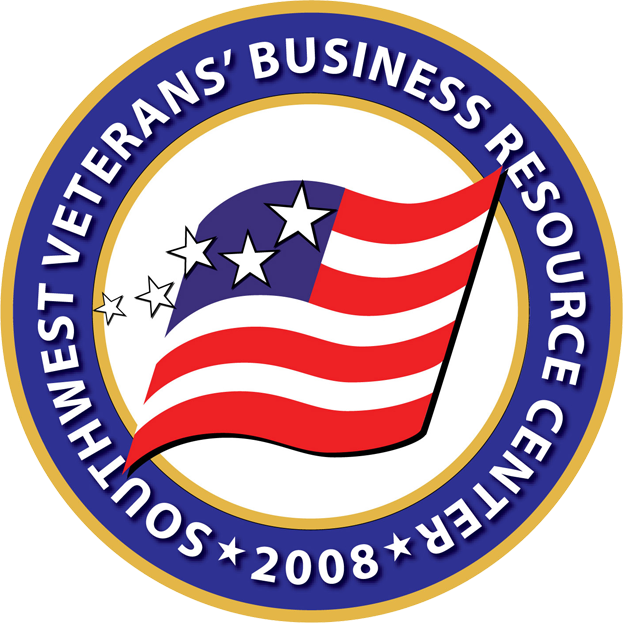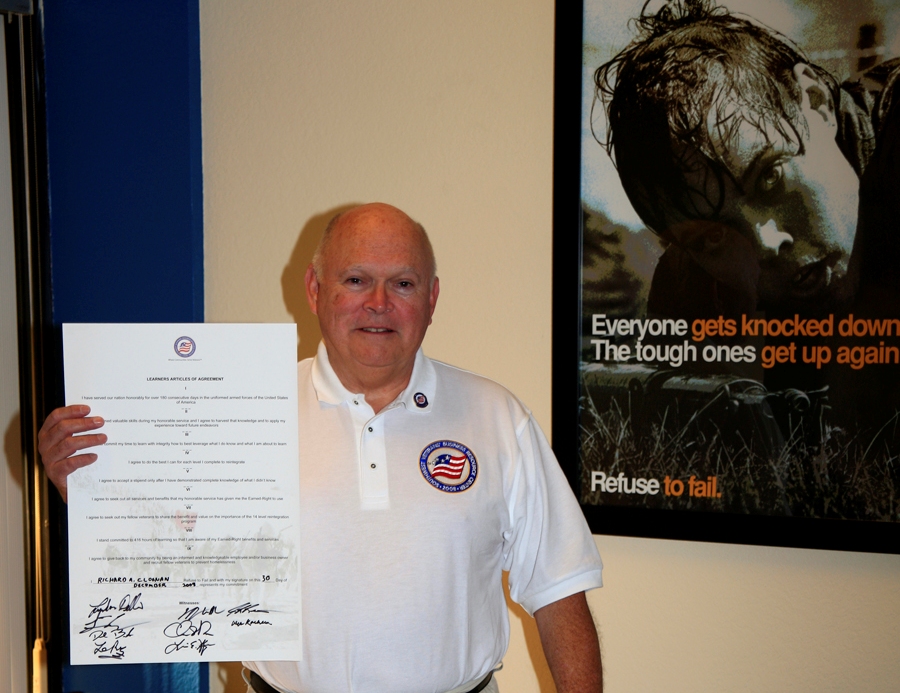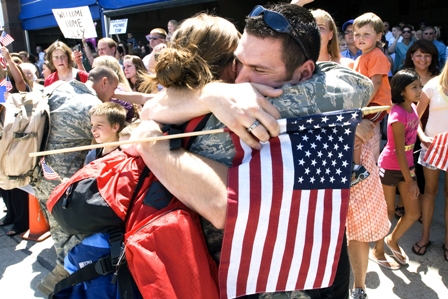Shortly after the towers fell on Sept. 11, I met Albert Renteria, a retired Marine Warrant Officer 4 with 26 years of service that wanted to lend a helping hand. While working with him on a project, called Operation Interdependence, that sent packages to the deployed troops, I too felt we had to reach out to those in need.
Recently I reunited with Al and when he told me 23 to 40 percent of the homeless are veterans. Even though the majority is Vietnam veterans, we are now seeking all homeless vets, especially those coming out of the two Gulf Wars. As a Vietnam veteran myself, it was alarming to learn that these veterans served and protected our country and are now being neglected by our government.
Al’s mission now is to prevent the homeless veteran. He introduced me to a 14-level-reintegration program and asked for a commitment to participate. The program is designed to help the veteran learn more about him and develop training skills that will help him succeed in life. “It is through this commitment that the veteran will increase his strength through knowledge and during this time will have other veterans assist him as he goes through the program,” Al said.
As this program develops with more learners, there is an excellent opportunity for mentoring and encouraged success. With this information, he convinced me to make a commitment that will reach out and help veterans.
My father was a WWII Veteran and I had 6 uncles that served in WWII. One uncle was killed in the Battle of the Bulge and a second uncle was killed when his ship was hit by a Japanese suicide bomber. Many veterans have sacrificed their lives for our country’s freedom, and it is important that we support those who have served. The ones that survived need to be treated with respect and properly cared for by our government.
After committing to the program, I can relate to what Al was saying. “Out of this program we have a mission to prevent homelessness. Our vision is to develop guiding principles with our most important resource in our community, our veterans,” said Al.
Al desires a commitment from the veterans with his willingness to compose thoughts. His credibility is his image, he served and brand-served honorably. To provide guidance for this commitment, Al presented me with several business models to communicate the success of his new organization, the Southwest Veteran Business Resource Center.
SWOT ANALYSIS:
Strength-Your Knowledge, Community Support
Weakness—Anger, Competitor, Homeless
Opportunity-Create, Need, Reach Out
Threats-Lack of Safety Measures, No Knowledge, Need to Document
SMEAC PLAN:
Situation--What is happening?
Mission--What is your intent?
Execution--What is your plan of attack?
Administration--Who is to be involved?
Communication--By What Mechanism do I Communicate?
Al believes that you need a plan. It must be alive, not read and not static. His mission’s intent is to aim for 2035 ending homeless vets.
Sigmund Freud describes an individual as to having sexual, physical, intellectual and emotional components. By having the sexual component equal in the center, the individual is more sound.
Freud’s background is very interesting. In the 1890’s when he first began to practice, he experimented with hypnosis. Freud knew very little about hypnosis was a poor operator and had the mistaken idea that a deep trance was necessary for good results. He gave up on hypnosis and sought other methods such as free association and dream interpretation.
Although Freud’s contributions to our knowledge of the mind and of psychotherapy are great, his abandoning hypnosis was harmful, for he blocked hypnotherapy for nearly 50 years.
Our success will be determined by:
Building Professionalism, Teamwork and Safety
Building a Veteran Force and preventing Homelessness
Quality service which is centered on the Family and Commitment
Structured and Disciplined Resource Decisions.
Sound Business Decisions
Commitment, Coordination and Cooperation is critical to our success
Continuous improvement is essential to quality service and the vet’s success.
The proper use of time is an excellent return on investment. A well thought out long term investment is usually more successful than the minimum short term investment.
Veterans don’t become homeless overnight. Usually by the time they’re homeless, they are not earning enough money and have worn out their family and friends, now they are forced out onto the streets.
In dealing with employment, they need skills in order to get a job again. The skills that they acquired in the military may not be transferable to the civilian sector.
The highest priority is to get more homeless vets off the streets and into housing and treatment programs. There is an entire continuum of care available, but it starts with outreach and trust building.
This 14-step program which Al developed is an excellent opportunity for the learner to expand on his life story. As well as, determine what his interests are, set goals, explore the many benefits and resources there are to learn how to network, prepare for an interview and develop a viable business plan. The vet is given the help and guidance by other vets to assure his success in developing his skills and self-confidence.


 A welcoming home for our Troops.
A welcoming home for our Troops.
